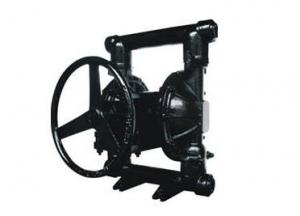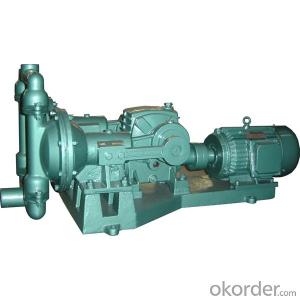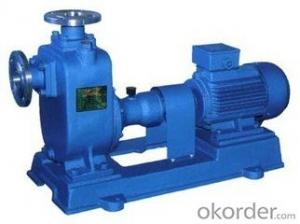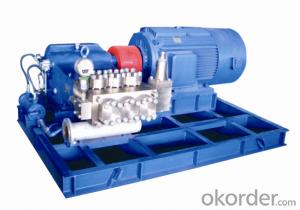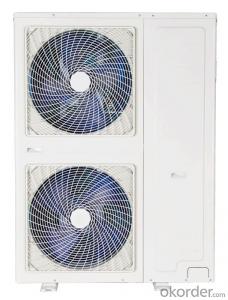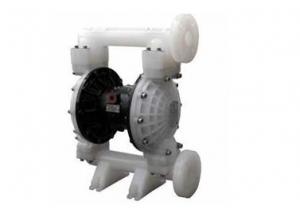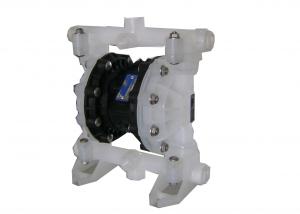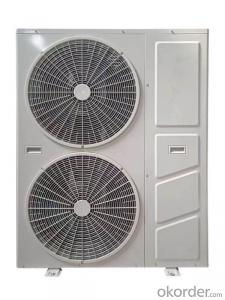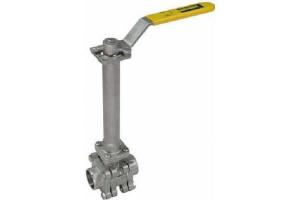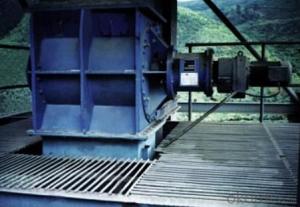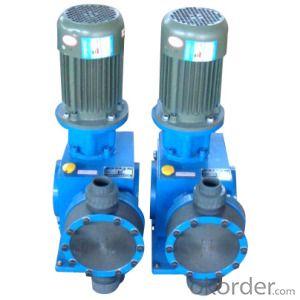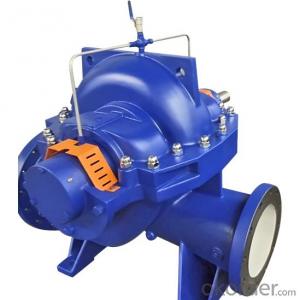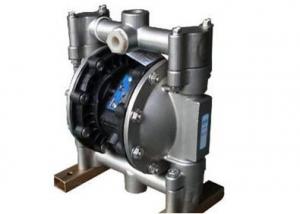GW TYPE Sewage pump 65 GW 25-15-2.2 DN65
- Loading Port:
- Shanghai
- Payment Terms:
- TT OR LC
- Min Order Qty:
- 5 unit
- Supply Capability:
- 20 unit/month
OKorder Service Pledge
OKorder Financial Service
You Might Also Like
A, product overview
This series of sewage pump is the introduction of the federal
republic of Germany ABS pump company advanced technology,
through the absorption and transformation of development,
various performance indexes reached the level of national standard
of similar products.Due to the unique, single (double) channel impeller
sewage capability is strong, can effectively by 5 times of pump diameter
of fiber content 50% of pump diameter and solid particles, dynamic seal
adopts two sets of special material of carbide mechanical seal device, the
material for cast iron and stainless steel.
Second, the product features
GW type pipe sewage pump is SG type based on the use of advanced
technology design and become the latest kind of pump.The pressurized
water pump can be used as general pipeline pump, and suction liquid
containing particles of impurities such as fiber, suspended solid impurities,
for chemical industry, textile, pharmaceutical, environmental protection
and other industries to provide the ideal conveying machinery.
Three, use the product
1, enterprise unit wastewater emissions;2, urban sewage treatment plant
emissions system;3 drainage station, subway, basement, civil air defense
system;4, hospital, hotel, high-rise building sewage;5, residential sewage
drainage station;6, municipal engineering, construction sites in the thin mud
emissions;7, tap water company's feed system;8, plants sewage several rural
farmland irrigation;9, exploration, mining and water treatment equipment;10,
water supply and drainage of water conservancy projects.
Four, model significance
For example: 200 gw400 30 P - 200 - outlet diameter (mm) GW - pipeline
sewage pump 400 - rated flow (m/h) 30 - rated head (m) P - the material is stainless steel
- Q:How does an air pump handle dusty environments?
- An air pump is designed to handle dusty environments in a few different ways. Firstly, it typically includes a filter system that helps to prevent dust and debris from entering the pump. This filter is usually made of a fine mesh material that traps small particles while still allowing air to flow through. Additionally, the housing of the pump is often sealed to minimize the amount of dust that can enter the internal components. This helps to protect the motor and other delicate parts from damage caused by dust particles. In some cases, air pumps may also feature an automatic cleaning mechanism that periodically clears any accumulated dust from the filter, ensuring its continued effectiveness. However, it is important to note that even with these features, air pumps may still require regular maintenance and cleaning to ensure optimal performance in dusty environments.
- Q:How does an air pump handle different air densities at different altitudes?
- To maintain optimal performance, an air pump is designed to handle varying air densities at different altitudes by adjusting its operational parameters. As the altitude increases, the atmospheric pressure decreases, causing a decline in air density. In order to compensate for this change, an air pump employs different mechanisms to ensure efficient operation. One method used by air pumps to handle different air densities is by adjusting the speed or rotation rate. By increasing the speed, the pump can offset the lower air density and maintain a consistent flow rate. This adjustment is typically done automatically, with sensors monitoring the air density and making necessary speed adjustments. Another approach employed by air pumps involves the use of variable geometry impellers or diffusers. These components have the capability to alter their shape or size to adapt to varying air densities. By modifying the impeller's shape or angle, the pump can optimize performance and maintain a consistent flow rate, regardless of altitude. Moreover, air pumps may incorporate electronic controls and sensors to monitor and adjust their operation based on the air density at a particular altitude. These sensors gather data on factors like temperature, pressure, and humidity, which are then used to calculate the air density. The pump's control system uses this information to automatically adjust parameters such as speed, impeller shape, or other relevant settings. In conclusion, an air pump handles different air densities at different altitudes by adjusting its operational parameters. This can be achieved through changes in speed or rotation rate, the utilization of variable geometry impellers or diffusers, and the incorporation of electronic controls and sensors. These mechanisms work together to ensure that the air pump maintains optimal performance and a consistent flow rate, regardless of the altitude.
- Q:Can an air pump be used for hydroponic systems?
- Yes, an air pump can be used for hydroponic systems. Air pumps are commonly used in hydroponics to provide oxygen to the nutrient solution for the plants' roots, promoting healthy growth and preventing root rot. The air pump works by creating bubbles or oxygenating the water, ensuring that the roots receive an adequate supply of oxygen.
- Q:Are there air pumps suitable for industrial applications?
- Yes, there are air pumps specifically designed for industrial applications. These air pumps are built to handle the demands of heavy-duty industrial use, where large volumes of air need to be pumped continuously. They are typically more powerful and durable compared to air pumps used for residential or commercial purposes. Industrial air pumps are capable of generating high-pressure air and can be used in various applications such as pneumatic tools, manufacturing processes, air compressors, HVAC systems, and wastewater treatment plants. They are engineered to withstand harsh environments, operate at high temperatures, and have longer service life. Additionally, they usually come with advanced features like variable-speed drives, energy efficiency, and remote monitoring to optimize performance and reduce operational costs.
- Q:Can an air pump be used for inflatable playhouses?
- Certainly! An air pump is capable of inflating inflatable playhouses. As a matter of fact, it is the primary instrument employed for this purpose. Air pumps are specifically designed to swiftly and effectively inflate different types of inflatable structures, including playhouses. They produce a consistent flow of air that can be directed into the playhouse through a valve or nozzle. This procedure enables the playhouse to be fully inflated and prepared for use within a few minutes. Additionally, air pumps generally include various nozzle attachments to fit different valve types, ensuring compatibility with various models of inflatable playhouses. Regardless of whether it is a manual hand pump or an electric pump, both can be utilized to inflate and deflate the playhouse as required.
- Q:How does an air pump handle different types of hoses?
- An air pump typically handles different types of hoses by utilizing various nozzle attachments or adapters that can be interchanged to fit the specific hose size and type. This allows the air pump to create a secure and airtight connection with different hoses, ensuring efficient and effective air pumping.
- Q:Centrifugal fan can use as a pump? It can vacuum?
- Also, the vacuum is not low, and barely scrape together. Mainly depends on your technical requirements.
- Q:Is it necessary to have a pressure gauge on an air pump?
- Yes, it is necessary to have a pressure gauge on an air pump. The pressure gauge allows you to monitor and control the amount of air being pumped into a tire or any other inflatable object. It ensures that you do not overinflate or underinflate, which can lead to potential safety hazards or damage to the object being inflated.
- Q:Can an air pump be used for inflatable water hammocks?
- Yes, an air pump can be used for inflatable water hammocks. In fact, it is highly recommended to use an air pump to inflate the hammock as it ensures a quick and efficient inflation process. Using an air pump eliminates the need for manual inflation which can be time-consuming and tiring. Additionally, an air pump provides consistent and controlled air pressure, resulting in a well-inflated and comfortable water hammock.
- Q:Can an air pump be used for inflating air filters in HVAC systems?
- No, an air pump cannot be used for inflating air filters in HVAC systems. HVAC systems require specific types of air filters that are designed to capture and remove particulate matter from the air. These filters are typically made of specialized materials and have specific dimensions and designs to fit within the HVAC system. An air pump is not capable of providing the necessary pressure or airflow to properly inflate these filters. It is important to use the appropriate tools and methods recommended by the manufacturer for maintaining and replacing air filters in HVAC systems.
1. Manufacturer Overview |
|
|---|---|
| Location | |
| Year Established | |
| Annual Output Value | |
| Main Markets | |
| Company Certifications | |
2. Manufacturer Certificates |
|
|---|---|
| a) Certification Name | |
| Range | |
| Reference | |
| Validity Period | |
3. Manufacturer Capability |
|
|---|---|
| a)Trade Capacity | |
| Nearest Port | |
| Export Percentage | |
| No.of Employees in Trade Department | |
| Language Spoken: | |
| b)Factory Information | |
| Factory Size: | |
| No. of Production Lines | |
| Contract Manufacturing | |
| Product Price Range | |
Send your message to us
GW TYPE Sewage pump 65 GW 25-15-2.2 DN65
- Loading Port:
- Shanghai
- Payment Terms:
- TT OR LC
- Min Order Qty:
- 5 unit
- Supply Capability:
- 20 unit/month
OKorder Service Pledge
OKorder Financial Service
Similar products
New products
Hot products


